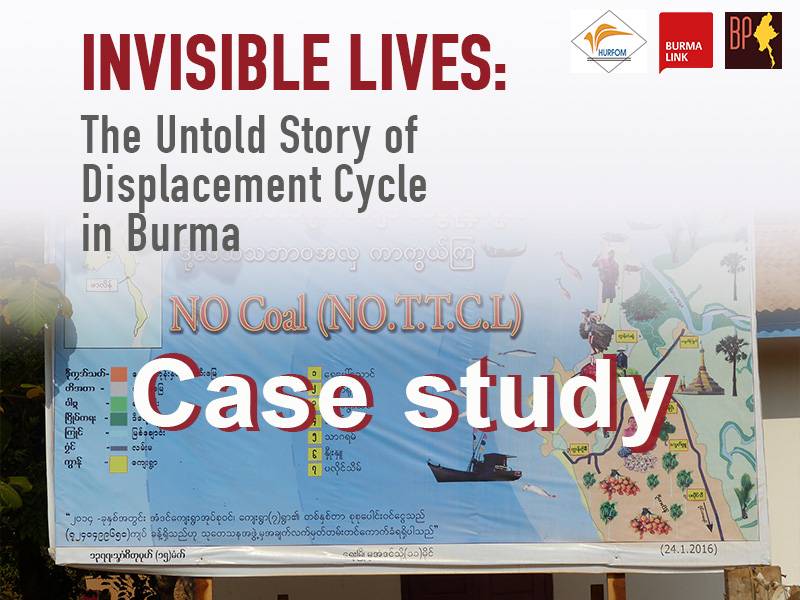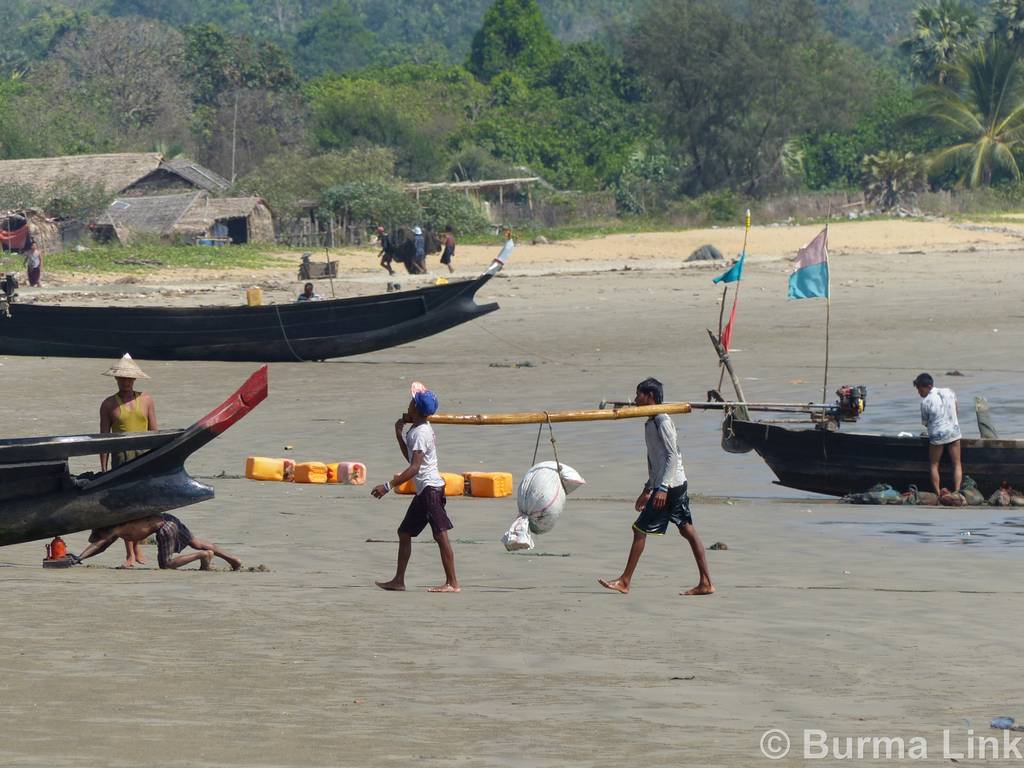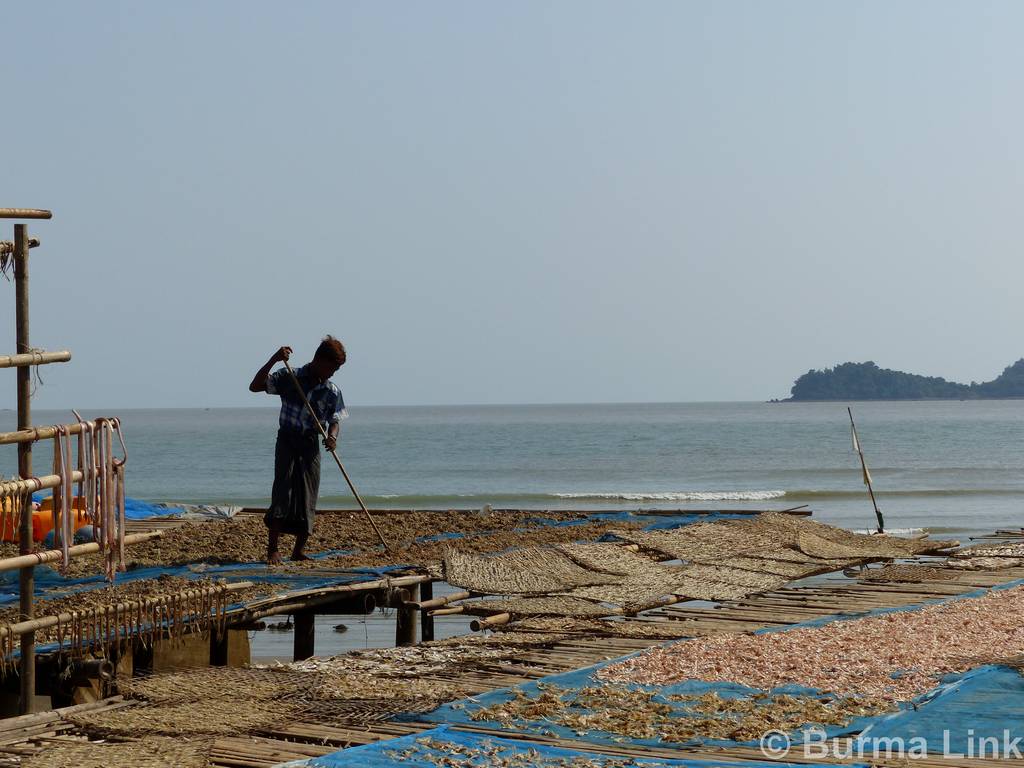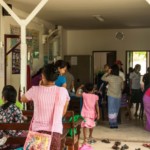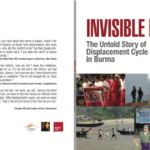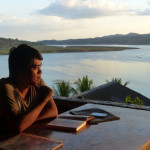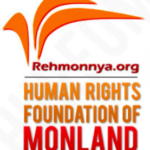Burma Link | September 28, 2016
The following case study is from the joint report “Invisible Lives: The Untold Story of Displacement Cycle in Burma” by Human Rights Foundation of Monland (HURFOM), Burma Link, and Burma Partnership, which was launched in a press conference in Rangoon on August 12th and in Moulmein on August 15th. The 65-page report focuses on the continuing concerns of the displaced ethnic nationality communities, particularly the ethnic Mon, living along Burma’s southeast border and finds that the recent reforms have not yet addressed the causes of their displacement.
Download the full report (PDF) in English
Download the full report (PDF) in Burmese
The following is the fourth case study in a series that HURFOM, Burma Link and Burma Partnership have been publishing in the coming weeks along with a series of selected interviews. The series is meant to give more in depth understanding into the situation of Mon IDPs and villagers. See methodology in the report.
Ann Din Coal Power Plant: Local Movement and Action to Preserve and Protect Natural Resources and Land1: Case Study #4
In response to the influx of foreign investments aided by laws such as the Foreign Investment Law and top-down development projects that have displaced communities and sparked conflicts, local communities throughout Burma are engaging in bottom-up grassroots movements to conserve their environment and culture for future generations.2 Communities are showing their strength and unity by raising their voices and expanding their networks to preserve their livelihood and protect the customary use of their land.
One such local community-led movement has been successful in halting a development project planned by Thailand-based, Toyo-Thai Corporation Public Company Limited (TTCL) to construct a 1,280 MW (megawatt) coal-fired power plant consisting of two units, each with 640 MW capacity, in AnnDin Village, Parlain Region, Ye Township in Mon State. The project was proposed to begin in 2016 and to continue over a span of 30 years, with a total investment of 2.8 billion USD.3 The company planned to purchase 500 acres of farmland just 500 meters away from the village of Ann Din as the project site covers 1,500,000 square meters (approximately 370.66 acres).
The proposed project can be split into three components: the site of the coal-fired power plant, the extended port and jetty to unload the coal to be delivered to the power plant and the transmission line that would connect the power plant to a grid. The power plant is expected to use approximately 3.5-4.5 million tons (at least 7.7-9.9 billion pounds) of coal a year, which will be imported from abroad. A jetty would be used to unload the imported coal from 75,000 DWT coal vessels, which is to be built 3-5 kilometers away from the shoreline after the seafront is dredged. The cooling circulation would need 200,000 cubic meters (43,993,850 UK gallons) of seawater per hour and the coal yard will use 960 cubic meters (211,170.5 UK gallons) of spray water per hour. This water will come from deep well water (retention water and/or rainwater).
This project plan has grave implications on the livelihood of the communities in Parlain. Local communities in Parlain Region rely on agriculture and the varied and diverse ecosystem. The undisturbed nature in the region and its fertile land allows villagers to cultivate betel nut and rice with relative ease. The aquatic ecosystems along the southern end of Mon State nourish local fisheries and these natural resources are the most important sources of the local economy.
Nature feeds local customs and provides local villagers with income so that the community can live without the need to struggle for survival. The proposed project would alter their traditional livelihoods and replace the natural landscape with unfertile soil and an unclean water source.
The chemical waste and the construction of the jetty would disrupt and change the sea floor and marine habitat, which will disrupt the local fishing industry. Other concerns included the influx of migrant workers to the area during the construction of the power plant – as they would need at least 3,850 workers and Ann Din’s population is only 2,768 – and the presence of workers from outside the village could erode local cultures and traditions.
The TTCL signed a Memorandum of Understanding (MOU) with the Ministry of Electric Power to build the coal-fired power plant on March 21, 2013 without the free, prior and informed consent of the local communities. Information regarding their plans was distributed only in English and while the local community requested the company to provide further information in their native language, TTCL failed to meet this demand. TTCL held only one consultation with the community on April 25, 2014, where they explained only the possible benefits of the coal-fired power plant.
The grassroots movement that eventually led to the successful halt of the project implemented several key initiatives to counter the constant push by TTCL to move forward with the project despite villagers’ protests. Monks, youth and other local CBOs in the area concerned with this new project reached out to national and regional human rights and environmental CSOs and held workshops and field trips – even going as far as Japan and Thailand on fieldtrips – to better understand the process of consultation, the environmental impact and social-economic implications the project may have on the community. The villagers built a strong network from grass-roots to national level, working to lobby the Mon State Parliament and the Union Parliament. They called on all parties to support their calls, including the NMSP, who issued a statement in support of the local villagers’ actions against the coal-fired power plant, citing political instability and inadequate environmental risk assessment as reasons to halt the project.
Periodic press conferences were held to raise the general public’s attention on the situation and in one instance 30 villagers came together to explain how they were enticed into signing a letter along with over 6,000 other signatories, which was sent to the Presidents office as a proof of local villagers’ support of the project. The environmental impact the project would have on their communities was never mentioned to the villagers and instead they were promised that hey would be provided with electricity at affordable costs and employment opportunities. The villagers have reached out to civil society organizations in an attempt to sue the company.
Those deeply involved in the movement volunteered their time – some giving up their jobs – to strengthen their organized calls against the project and ensure that visitor records were kept as documentation. Fliers and posters were created and monthly newsletters were distributed throughout the region to increase villagers’ awareness of the project, reminding them of the company’s plans and continuing to update the community with any new information of the project, which will ultimately affect their lives and livelihood.
Youth and the monks from the Ann Din Monastery emphasized the crucial role that data collection of the regions natural resources have had in their efforts to protect their land. In addition, they also stressed the value of producing a report about the region’s livelihood solutions, which continues to aid them in their advocacy efforts. Academics and researchers from regional and local CSOs helped train the local people to collect extensive data and conduct research on the local ecosystems and natural resources, which is being used to combat the project plans. The research has helped the locals understand the true monetary and environmental value of the land, which in turn led to the knowledge that the company had offered grossly low compensation for the actual value of their land:
After we had done collecting the data, we knew that we are producing around 60,000,000 betel nut
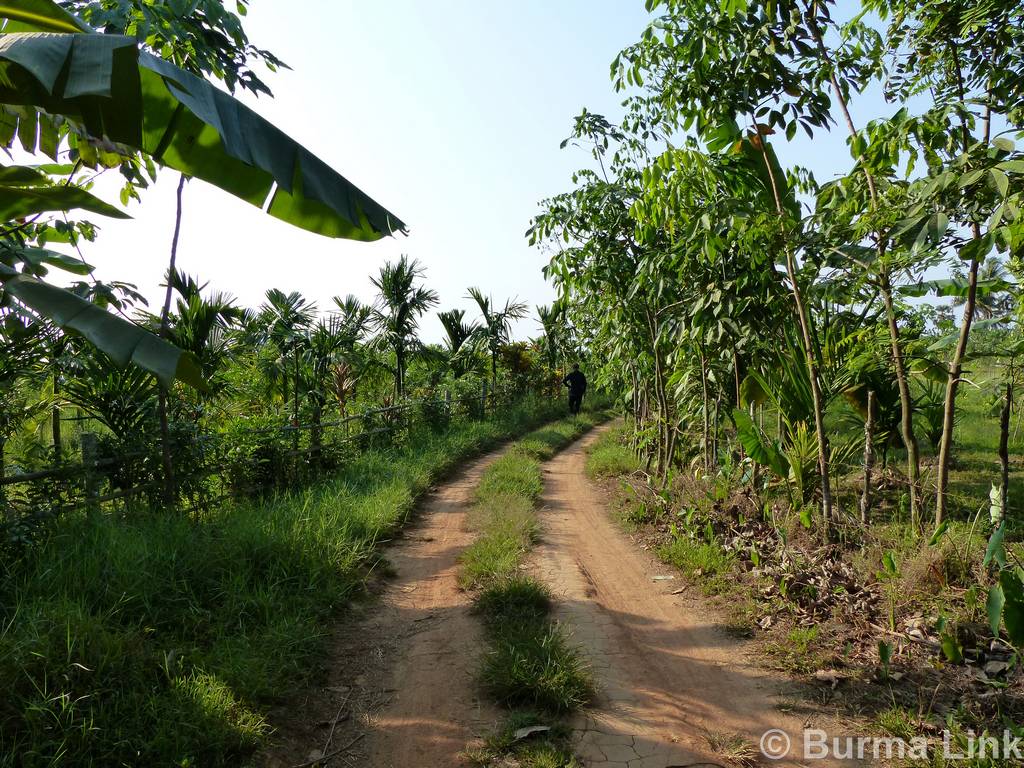 CAPTION: From top and center: fishing village in Parlain Region in a bay next to Ann Din; bottom: Road leading up to the proposed project site in Ann Din.
CAPTION: From top and center: fishing village in Parlain Region in a bay next to Ann Din; bottom: Road leading up to the proposed project site in Ann Din.
Local CBOs were instrumental in gathering protestors and petitions against the power plant. Mon Youth Forum, Ye Social Service and representatives from other CBOs and human rights organizations submitted 3,581 signatures that opposed the power plant to Mon State Parliament in February 2015.
Despite a clear call for a halt to the plans by local people and Mon State’s prohibition on the TTCL’s feasibility study, on April 9, 2015, the TTCL signed a Memorandum of Agreement (MOA), entering into a conditional agreement to move forward with the project with the previous USDP Government and the Department of Hydropower Planning, Ministry of Electric Power. The community-led movement had gathered momentum and responded to this decision by the TTCL and the government. On May 5, 2015, over 6,000 people joined together at Ann Din Village in a mass protest against the TTCL’s plans.
In January 2016, the TTCL halted project plans following a year of vocal opposition from the local community. All those who worked to oppose the project agreed that this was the single most powerful tool they had against the company – the unified spirit of the community:
Unity is a very powerful weapon to fight against such a dangerous project.5
(Monk in Ann Din Monastery)
Having one voice and unity is one of our victory.6
(Monk in Ann Din Monastery, initially supported the power project plans by TTCL)
These bottom-up approaches including land protection, consultation, campaigning and decision-making can empower communities to take effective action and find solutions to natural resources and land protection that are most conducive to their own community. The decision of what happens to these lands in ethnic areas should be in the hands of the local ethnic people and communities, who have to live with the consequences from such top-down development projects and foreign investments. Supporting and advocating for these locally led movements will preserve the land, natural resources and culture that refugees and IDPs may return to one day, increasing the possibility of a durable livelihood solution upon their return.
We all need to be organized to be united and do something towards political change. We should not attack each other; we should connect with each other.
(Dr. Aung Naing Oo, Deputy Speaker of Mon State Parliament)
- Monk, interview with author, Ann Din, 6 April 2016; Youth, interview with author, Ann Din, 6 April 2016; Dr. Aung Naing Oo, interview with author, April 4, 2016.
- “We will Manage our Own Natural Resources,” Rays of Kamoethway Indigenous People and Nature and Tenasserim River and Indigenous People Network (2016): accessed June 26, 2016, http://www.burmapartnership.org/2016/03/we-will-manage-our-own-natural-resources-karen-indigenous-people-in-kamoethway-demonstrate-the-importance-of-local-solutions-and-com-munity-driven-conservation/.
- “Abundance of Pharlain Natural Resources and Communities,” Pharlain Community (2016): 48.
- Monk, interview with author, Ann Din, 6 April 2016.
- Monk, interview with author, Ann Din, 6 April 2016.
- Monk, interview with author, Ann Din, 6 April 2016.

